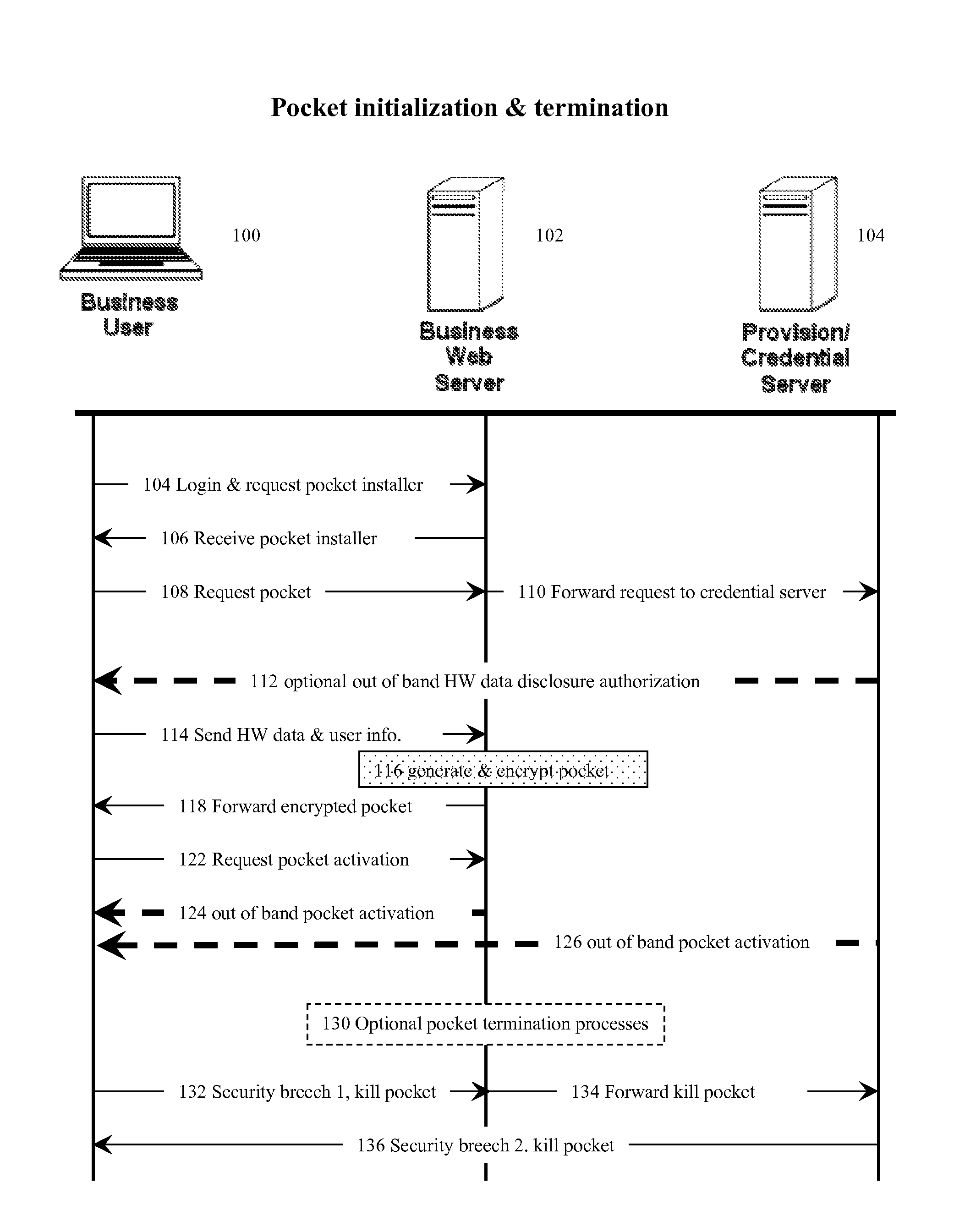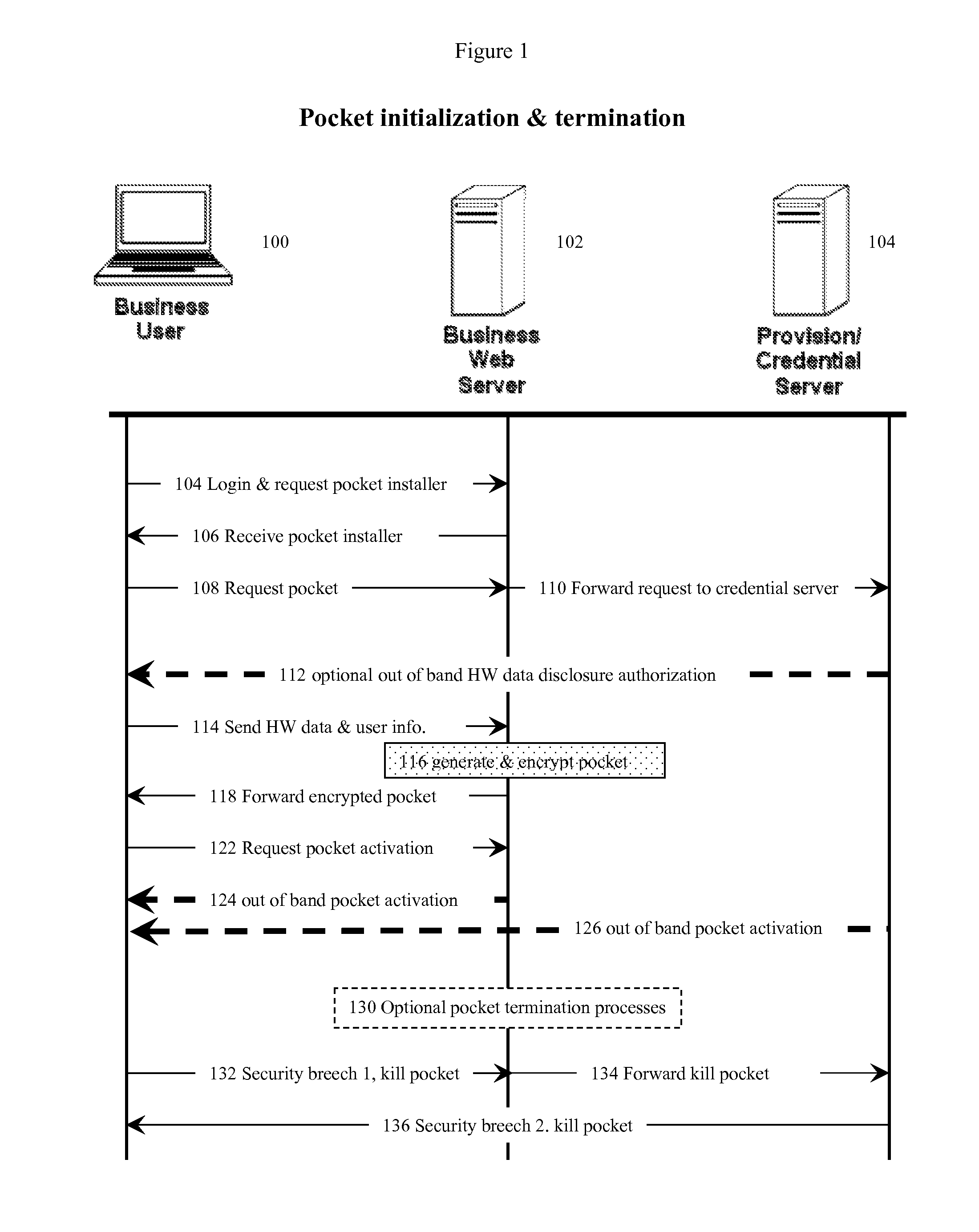Hardware-Bonded Credential Manager Method and System
- Summary
- Abstract
- Description
- Claims
- Application Information
AI Technical Summary
Benefits of technology
Problems solved by technology
Method used
Image
Examples
Embodiment Construction
[0031]In one aspect of the invention, the pocket / hardware-bonded credential manager security method used here can be used as part of a computer or computerized device's internet web browser. Such computers or computerized devices (often referred here as simply “computerized devices” or “device”) can consist of desktop computers, laptop computers, cell telephones, personal digital accessories and other such devices.
[0032]The hardware-bonded credential manager method can also be regarded as a device-bound user cryptographic security key or token manager. Because it is bound to the hardware characteristics of the user's computerized device, and optional user secret information as well, this method is essentially equivalent to requiring both that the user know something and that the user have something—in this case the device's unique hardware components and / or network address. If biometric information is used as part of the user information component, the method can be even more secure...
PUM
 Login to View More
Login to View More Abstract
Description
Claims
Application Information
 Login to View More
Login to View More - R&D
- Intellectual Property
- Life Sciences
- Materials
- Tech Scout
- Unparalleled Data Quality
- Higher Quality Content
- 60% Fewer Hallucinations
Browse by: Latest US Patents, China's latest patents, Technical Efficacy Thesaurus, Application Domain, Technology Topic, Popular Technical Reports.
© 2025 PatSnap. All rights reserved.Legal|Privacy policy|Modern Slavery Act Transparency Statement|Sitemap|About US| Contact US: help@patsnap.com



